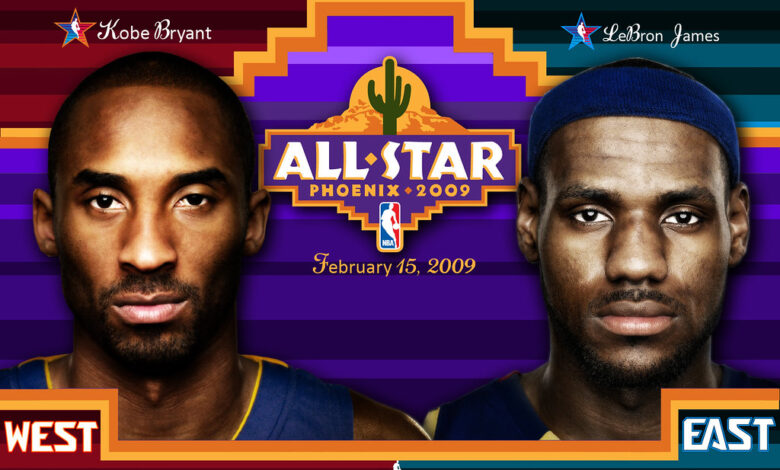NBA All Star When: The Evolution and Impact of the NBA All-Star Game

The NBA All-Star Game, a marquee event in the world of professional basketball, is not just a game but a celebration of talent, showmanship, and sportsmanship.
Held annually every February, this exhibition game highlights the pinnacle of basketball prowess, featuring 24 of the league’s star players.
A Brief History of the NBA All-Star Game
The tradition began at the Boston Garden on March 2, 1951. The concept was birthed amidst a scandal that shook the college basketball world, leading NBA publicity director Haskell Cohen, NBA President Maurice Podoloff, and Boston Celtics owner Walter A.Brown to conceive a high-profile showcase to reignite public interest in professional basketball. Despite initial skepticism, the game was a resounding success, drawing an attendance of 10,094, significantly higher than the season’s average.
Record-Breaking Moments
The 2010 NBA All-Star Game set an attendance record for a basketball game, with 108,713 spectators at Cowboys Stadium in Arlington, Texas.
This event not only celebrated the sport but also demonstrated its growing popularity and the immense draw of its star athletes.
Selection Process and Game Format
Choosing the Lineup
The selection process for the All-Star Game is a democratic blend of fan, player, and media voting to decide the starting lineup, while the reserve players are picked by the head coaches from each conference.
The NBA commissioner steps in to select a replacement if any selected player is unable to participate due to injury.
Innovative Game Formats
From 2018 to 2023, the NBA experimented with a non-conference-based format where two team captains, the leading vote-getters from each conference, would draft their teams from the pool of selected All-Stars.
In 2024, the NBA reverted to the traditional conference-based format. Noteworthy is the introduction and removal of the untimed fourth quarter, known as the Elam Ending, initiated in 2020 to honor Kobe Bryant, and the retention of the charity element, which maintains competitive spirit by awarding cash prizes to the charities chosen by the winning teams of each quarter.
Also Read: Boston Celtics Dominate Golden State Warriors as Burna Boy Watches Game in NBA
The Cultural and Social Impact
Beyond Just a Game
The NBA All-Star Game often reflects broader social issues. For instance, the 2017 All-Star Weekend was initially set for Charlotte, North Carolina, but was relocated to New Orleans due to the controversial House Bill 2, known as the “bathroom bill,” seen as discriminatory against transgender persons.
This move underscored the NBA’s commitment to social justice and inclusivity.
The All-Star Game as a Global Phenomenon
Worldwide Influence
The NBA All-Star Game is not only a significant event in the United States but also a global spectacle that attracts viewership from around the world.
It serves as a powerful tool for global outreach, bringing the spectacle of American basketball to an international audience and showcasing the league’s commitment to diversity and excellence in sports.
Technological Innovations and Broadcast
With advancements in broadcasting technology, the NBA All-Star Game reaches millions of homes worldwide, making it one of the most watched sports events globally.
The incorporation of virtual reality and other interactive fan experiences continues to enhance its reach and impact.
Looking Towards the Future
The NBA All-Star Game continues to evolve, blending tradition with innovation. As basketball’s popularity soars globally, this annual event will likely keep introducing new elements to maintain its status as a premier sports entertainment spectacle.
Conclusion
From its historical inception to its current status as a global sports phenomenon, the NBA All-Star Game symbolizes more than just basketball excellence; it embodies the spirit of competition, community, and innovation.
As we look forward to future games, the legacy of this iconic event is sure to grow, influenced by the dynamic changes in sports, technology, and society.
FAQs About the NBA All-Star Game
- What is the NBA All-Star Game?
- It’s an annual basketball exhibition game hosted by the NBA, featuring the league’s star players.
- When did the first NBA All-Star Game take place?
- The first game was played on March 2, 1951, at the Boston Garden.
- How are players selected for the game?
- Players are selected through a combination of fan, player, and media voting for starters, while head coaches pick the reserves.
- Has the format of the All-Star Game changed over the years?
- Yes, the format has seen several changes, most notably the non-conference-based team selection from 2018 to 2023 and the reintroduction of the conference-based format in 2024.
- What was the attendance record for the NBA All-Star Game?
- The record was set in 2010 with 108,713 attendees at Cowboys Stadium in Arlington, Texas.
- Why was the 2017 NBA All-Star Game moved from Charlotte to New Orleans?
- It was moved due to the controversial “bathroom bill” passed in North Carolina, which was seen as discriminatory against transgender persons.
- What is the Elam Ending, and why was it removed?
- The Elam Ending was an untimed fourth quarter introduced in 2020 to honor Kobe Bryant. It was removed in 2024 as the NBA returned to the traditional game format but kept the charity element.





